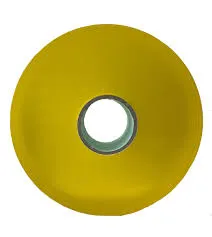- Afrikaans
- Albanian
- Amharic
- Arabic
- Armenian
- Azerbaijani
- Basque
- Belarusian
- Bengali
- Bosnian
- Bulgarian
- Catalan
- Cebuano
- Corsican
- Croatian
- Czech
- Danish
- Dutch
- English
- Esperanto
- Estonian
- Finnish
- French
- Frisian
- Galician
- Georgian
- German
- Greek
- Gujarati
- Haitian Creole
- hausa
- hawaiian
- Hebrew
- Hindi
- Miao
- Hungarian
- Icelandic
- igbo
- Indonesian
- irish
- Italian
- Japanese
- Javanese
- Kannada
- kazakh
- Khmer
- Rwandese
- Korean
- Kurdish
- Kyrgyz
- Lao
- Latin
- Latvian
- Lithuanian
- Luxembourgish
- Macedonian
- Malgashi
- Malay
- Malayalam
- Maltese
- Maori
- Marathi
- Mongolian
- Myanmar
- Nepali
- Norwegian
- Norwegian
- Occitan
- Pashto
- Persian
- Polish
- Portuguese
- Punjabi
- Romanian
- Russian
- Samoan
- Scottish Gaelic
- Serbian
- Sesotho
- Shona
- Sindhi
- Sinhala
- Slovak
- Slovenian
- Somali
- Spanish
- Sundanese
- Swahili
- Swedish
- Tagalog
- Tajik
- Tamil
- Tatar
- Telugu
- Thai
- Turkish
- Turkmen
- Ukrainian
- Urdu
- Uighur
- Uzbek
- Vietnamese
- Welsh
- Bantu
- Yiddish
- Yoruba
- Zulu
Transparent Colored PVC Sheets for Creative Projects and Versatile Applications
The Versatility of Transparent Colored PVC
Transparent colored PVC, or polyvinyl chloride, is increasingly becoming a popular choice in various industries due to its unique characteristics and adaptability. This innovative material not only offers the benefits of traditional PVC but also comes in a range of vibrant colors that enhance its utility and aesthetic appeal.
Understanding PVC
Polyvinyl chloride is a synthetic plastic polymer widely used in the construction, healthcare, and consumer goods industries. Its versatility stems from its durability, resistance to water and chemicals, and ease of fabrication. Transparent colored PVC builds upon these advantages by introducing a wide variety of hues and shades, thereby expanding its applications beyond traditional uses.
Applications in Various Industries
One of the most notable applications of transparent colored PVC is in the construction industry. It is used in building materials such as windows, roofs, and wall panels. The transparent colored variants allow for innovative design solutions that can subtly filter light while providing economic energy efficiency. The aesthetic attributes of these materials enable architects and designers to create visually appealing structures that maintain functionality.
In the automotive sector, transparent colored PVC is utilized in vehicle interiors and exteriors, providing a dynamic look while enhancing safety features. Its lightweight nature aids in fuel efficiency, and its resistance to aging ensures that the colors remain vibrant over time.
The packaging industry has also embraced transparent colored PVC, particularly for consumer goods. Product packaging that is both eye-catching and informative can significantly influence consumer behavior. Transparent colored PVC allows manufacturers to create striking visual effects while ensuring that products remain visible, reinforcing brand recognition.
transparent colored pvc

Advantages of Transparent Colored PVC
One of the most significant advantages of transparent colored PVC is its ability to combine form and function. Unlike standard transparent materials, the colored variants can invoke emotions, signal quality, and increase brand visibility—all while maintaining the material's inherent characteristics.
Moreover, transparent colored PVC is lightweight and shatterproof, making it an ideal choice for various applications where safety and durability are paramount. Its beneficial properties, such as resistance to fire, UV radiation, and chemicals, make it suitable for both indoor and outdoor use.
The ease of processing transparent colored PVC contributes to its popularity among manufacturers. It can be molded, extruded, and fabricated into different shapes without losing its quality. This enables designers to break away from traditional molds and explore new designs that can cater to evolving consumer preferences.
Environmental Concerns and Innovations
While the benefits of transparent colored PVC are abundant, it is essential to address the environmental concerns associated with PVC production and disposal. As the industry moves towards sustainability, many manufacturers are now producing eco-friendly PVC with a reduced carbon footprint. Recycling programs and innovations in material science are paving the way for the development of greener practices.
Conclusion
Transparent colored PVC is a remarkable material that exemplifies the intersection of functionality and design. As industries continue to innovate, the applications of this material are destined to expand. By understanding and leveraging the advantages of transparent colored PVC, businesses can create products that not only meet practical needs but also resonate emotionally with consumers. The future of transparent colored PVC is bright, paving the way for sustainable and aesthetically pleasing solutions across myriad industries.
-
High-Quality Cold Room Door Curtains Durable PVC Strip Curtains for Cold StorageNewsJul.05,2025
-
Shop Yellow Ticking Stripe Curtains – Classic Style, Durable Fabric, Multiple Colors AvailableNewsJul.05,2025
-
Plastic Curtain for AC – Energy Saving & Easy Installation Perfect for Room and Freezer UseNewsJul.04,2025
-
Industrial Strip Curtains - Durable PVC & Plastic Solutions for Industrial DoorsNewsJun.24,2025
-
PVC Curtain Strip – Durable Standard PVC Strips for DoorsNewsJun.10,2025
-
PVC Strip Curtain – Durable & Transparent Plastic Strips for Industrial Use Affordable PricesNewsJun.10,2025



